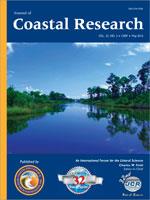Kearney, M.S. and Turner, R.E., 2016. Microtidal marshes: Can these widespread and fragile marshes survive increasing climate–sea level variability and human action?
Microtidal organic marshes, where mineral inputs are low to negligible and the dominant organic inputs to vertical accretion are subject to substantial losses from decomposition, may be particularly at risk from future environmental change. Generally occurring along coasts with small tidal frames (<2-m tidal range, or microtidal), these marshes are characterized by average flood velocities too low to import appreciable mineral sediment into marsh interiors. Their reliance on organic accumulation makes them vulnerable to any factor that affects annual biomass inputs, whether by animal (e.g., waterfowl or snails) overgrazing, damage to physiological functioning (substrate anoxia, excess hydrogen sulfide, and nutrient concentrations), or erosion from coastal storms. The sudden dieback phenomenon highlights differences between microtidal marshes and those in larger tidal frames. Despite a number of proposed causes, dieback in microtidal systems can resemble classic interior pond formation from rapid sea level rise. By comparison, in marshes where tidal ranges exceed 2 m, it commonly involves wholesale plant loss across a wide area, whether in shoreline areas only or across the breadth of the marsh. Increasing sea level variability, with more frequent accelerations and decelerations, along with exceptional high and low stands, could add a critical element to the matrix of stressors (many of human origin) to fragile microtidal marshes. These marshes, therefore, could be lost at faster rates than expected from future sea level rise scenarios. Society should be rightly concerned about whether microtidal marshes can endure future sea level rise, as well as whether they can survive our stewardship now.





